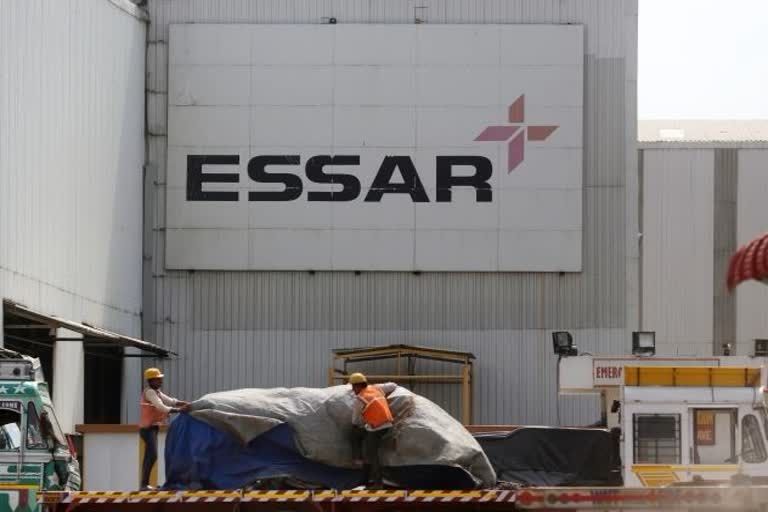New Delhi: The Supreme Court ruling in Essar Steel matter is a "watershed moment" for the insolvency jurisprudence and takes away excuses of parties to halt resolution process midway, according to IBBI Chairperson M S Sahoo.
The Insolvency and Bankruptcy Code, 2016 envisages closure of a corporate insolvency resolution process (CIRP) in a time-bound manner.
The chief of the Insolvency and Bankruptcy Board of India (IBBI) noted that in three years, the Code "boasts of a vast and rich jurisprudence", adding that with every court judgement, the insolvency law is developing deeper and stronger roots.
On November 15, the Supreme Court paved the way for ArcelorMittal's takeover of Essar Steel for Rs 42,000 crore under the insolvency resolution process, which had been pending for long, mainly due to legal challenges.
In an interview to PTI, Sahoo said the judgement provides clarity about the roles of resolution professional, resolution applicant, Committee of Creditors (CoC), adjudicating authority and appellate authority, qua a resolution plan.
"This judgement is a watershed moment in the insolvency jurisprudence and in sync with the basic structure of the insolvency law in India and elsewhere," he said.
Besides establishing the supremacy of the CoC in a matter relating to CIRP, Sahoo noted that the order explains the extent of limited review available to the adjudicating authority, which can in no circumstance trespass upon a business decision of the majority of the CoC.
Among others, the ruling resolves the issue of distribution of profits made during the resolution process and stops the claims popping up after approval of a resolution plan.
"It (judgement) upholds the sanctity of overall timeline of 330 days for a CIRP, except in exceptional cases. It also upholds the provisions relating to distribution of realisations under a resolution plan, considering that treating unequals equally would defeat the very objective of the Code.
Read more:Airtel lost up to 30 lakh customers due to J&K network shutdown
"It endorses the resolution plan of ArcelorMittal, as amended and accepted by the CoC, for resolution of Essar. All these take away excuses of the parties to halt the process of resolution midway and streamline the processes for timely conclusion of CIRPs," Sahoo said.
About jurisprudence, he said that an economic legislation is more or less a skeletal structure and judicial pronouncements add flesh and blood to it. But the insolvency law has vast and rich jurisprudence within a short span, he added.
"The adjudicating authority, the National Company Law Appellate Tribunal (NCLAT) and the Supreme Court have explained several conceptual issues, settled contentious issues and resolved grey areas, with alacrity.
"These orders have provided clarity to the roles of various stakeholders in the resolution process and as to what is permissible and what is not, thereby streamlining the processes and ensuring the predictability of the processes for future," Sahoo said.
While delivering its ruling in the Essar Steel case, the apex court also relaxed the timeline of 330 days for resolution. It would be open for the adjudicating authority to maintain the timeline in exceptional cases, the court had said.
Under the Code, a resolution process is to be completed in 180 days and a one-time extension of up to 90 days can be availed.
Through an amendment to the law, an overall mandatory time of 330 days, including the time taken in legal proceedings, was introduced.
"It is an accepted principle that where a judicial/quasi-judicial authority is required to perform a statutory duty within the time prescribed therefor, the same is regarded directory. It is because, the stakeholders must not suffer if the authority fails to perform the statutory duty within the time, for whatever reasons. That is why the word 'mandatorily' has been dropped," Sahoo said.
Elaborating further, he said the impact is that a resolution process must be completed within 330 days from the insolvency commencement date, including extensions and the time taken in legal proceedings.
"It is only in exceptional cases that time can be extended, particularly when the adjudicating authority cannot take up a matter within the prescribed time for no fault of the stakeholders.
"Thus, the timelines of 180 days, an additional 90 days, and the overall 330 days remain sacrosanct. With most of the contentious issues having been settled, extensive learning by the stakeholders over the last three years, and enhanced bench capacity of the adjudicating authority, I do not see any difficulty in time-bound insolvency resolution," he added.
As on September 30, more than 2,540 cases were admitted under the Code, out of which resolution process is on in 1,497 cases, as per the data available with the IBBI.



